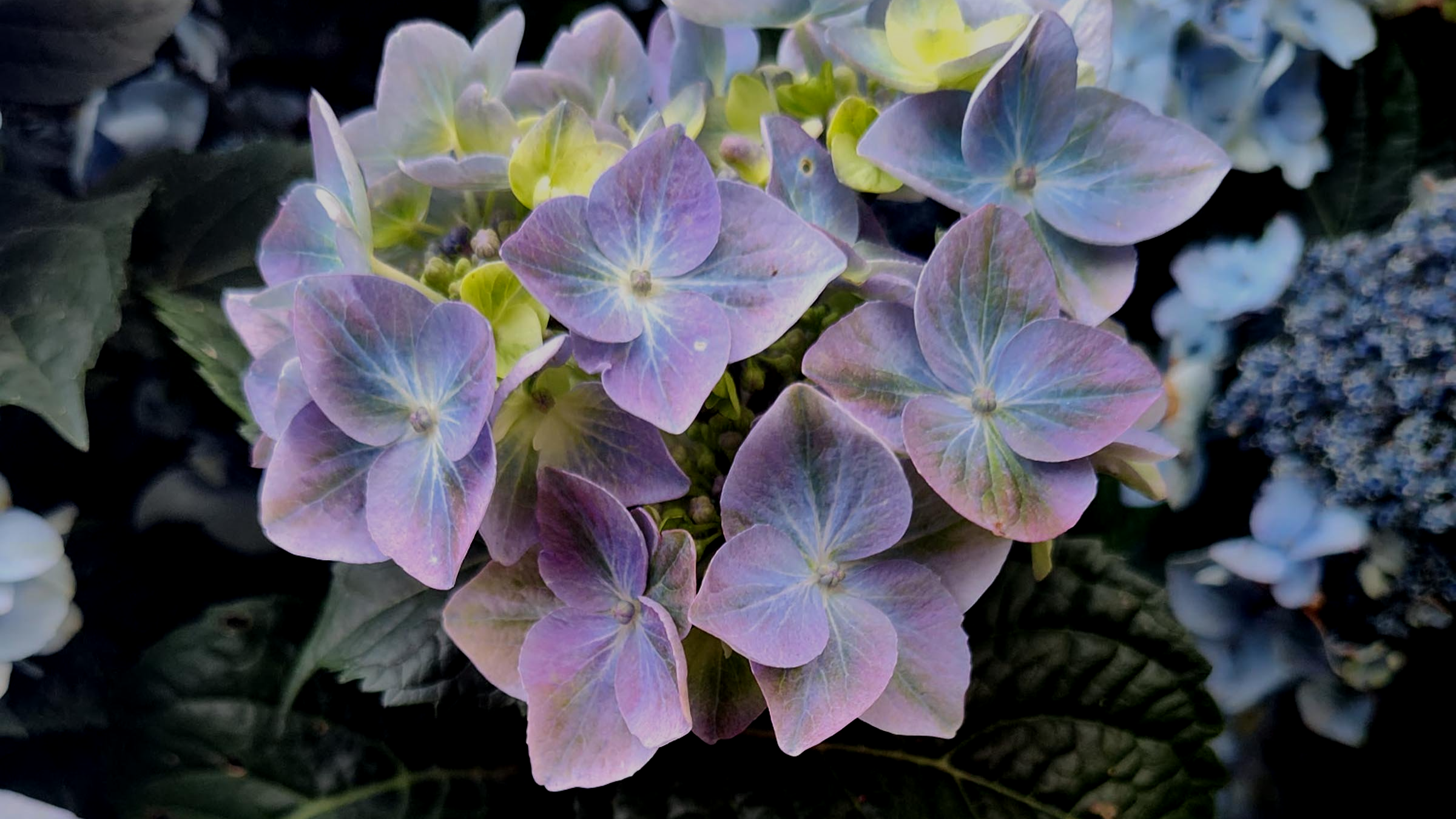Most gardeners are familiar with florist Cyclamen. They are popular during the cooler times of the year and are usually sold as a table decoration to be enjoyed indoors for a few weeks and then discarded. In warmer climates like California, you can actually plant them outside for the winter, but up here they will only survive with extra protection. However, there is a hardy relative to the florist Cyclamen that is perfect for our climate and every gardener should make some space for a small drift of them.
Starting in August and lasting through October, Cyclamen hederifolium will grace a shady part of your garden with its dainty butterfly-like flowers. They come in various shades of pink or pure white and rise about 3 inches above the soil surface. When the flowers fade, an amazing thing happens… The straight flower stems begin to coil up like springs, which results in the fertilized flower being lowered to the soil surface where it comes in contact with leaf litter or mulch. There, the seeds will develop and germinate or be relocated with the help of ants (the seeds are coated with a sweet substance that the ants are drawn to) to other locations in the garden. It is a fascinating process that you will miss if you don’t get down on your hands and knees to check it out.
But this flowering thing is only part of the excitement of these hardy Cyclamen. After the flowers finish, then the foliage emerges and carpets the ground all the way into the next summer. The foliage is equally, if not more, interesting than the flowers. The leaves resemble English Ivy in their shape, but come in an assortment of marbled designs that remind me of the patterns of snake skin. Over the last several years breeders have selected out specific patterns and you can now buy named varieties on the basis of the leaf colors, which can range from solid silver or pewter to exotic mottled forms.
Another hardy variety is Cyclamen coum, similar to the above flavor only with a little different schedule. Instead of flowering first and then leafing out, Cyclamen coum will emerge in the fall with foliage similar to Cyclamen hederifolium, only smaller and almost round in shape. While the leaves aren’t quite as dramatic, the patterns can be just an interesting. Cyclamen coum will retain its foliage all winter and then start blooming in January and continue into early spring. The flowers are essentially the same as Cyclamen hederifolium only slightly smaller.
To successfully grow these little jewels, you only need a shady spot with well-drained soil - under deciduous trees and shrubs is an ideal location. When the shrubs are out of leaf in the winter the Cyclamen will be strutting their stuff and, in the summer, when the shrubs are fully foliaged, the Cyclamen will be sleeping. It’s a perfect relationship. And in just a few short years your 4 to 5 plants will naturalize into a drift of hundreds of pink flowers dancing above the soil like tiny butterflies hovering over a field of flowers. How could anyone resist an image like that?
You can find hardy Cyclamen in garden centers this time of year and now that we have had a little rain, it is a perfect time to start a drift or two in that shady spot in the garden. Remember, they establish slowly, so be patient. And don’t forget that they go dormant in the summer, so don’t accidentally dig them up. In time, they will become one of your favorite plants to look forward to in the fall!


